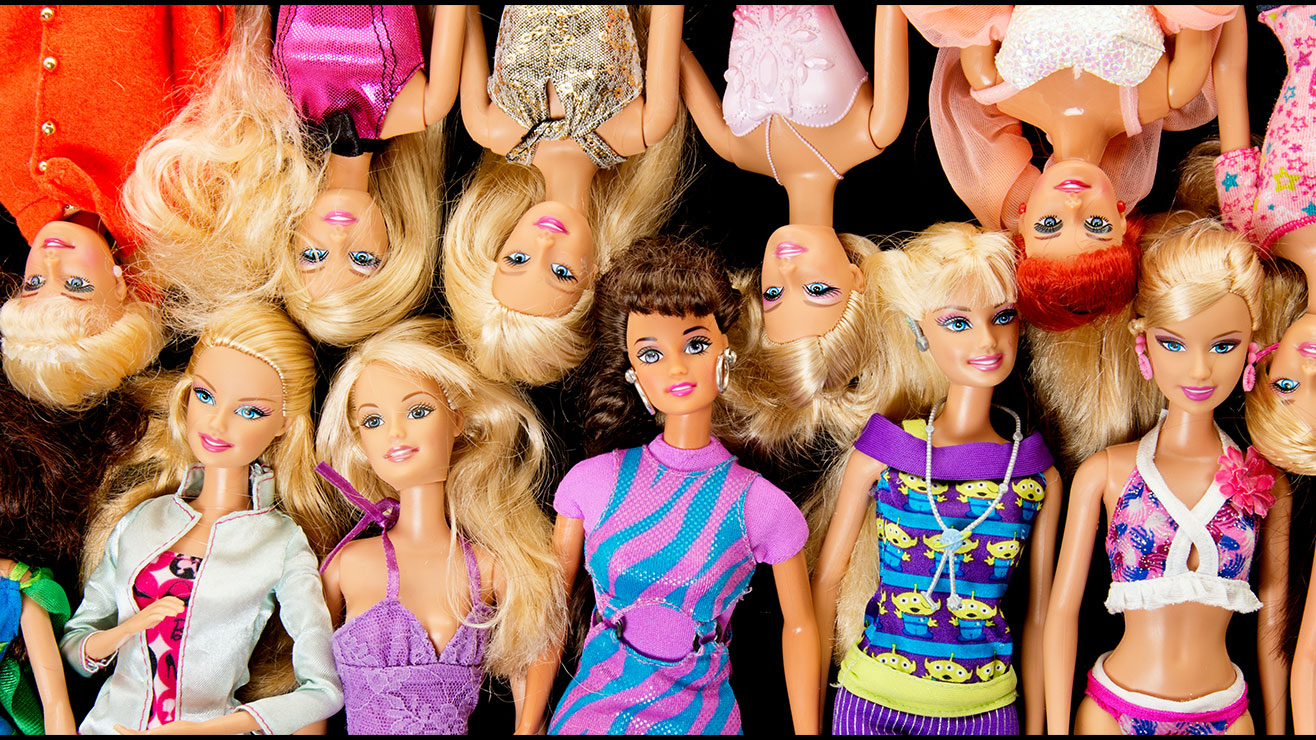Girls as young as 6 are already feeling the pressure to be sexy, study finds
Most girls as young as 6 are already beginning to think of themselves as sex objects, according to a new study of elementary school-age kids in the Midwest.

Most girls as young as 6 are already beginning to think of themselves as sex objects, according to a new study of elementary school-age kids in the Midwest.
Researchers have shown in the past that women and teens think of themselves in sexually objectified terms, but the new study is the first to identify self-sexualization in young girls. The study, published online July 6 in the journal Sex Roles, also identified factors that protect girls from objectifying themselves.
Psychologists at Knox College in Galesburg, Ill., used paper dolls to assess self-sexualization in 6- to 9-year-old girls. Sixty girls were shown two dolls, one dressed in tight and revealing "sexy" clothes and the other wearing a trendy but covered-up, loose outfit.
Using a different set of dolls for each question, the researchers then asked each girl to choose the doll that: looked like herself, looked how she wanted to look, was the popular girl in school, she wanted to play with.
Across-the-board, girls chose the "sexy" doll most often. The results were significant in two categories: 68 percent of the girls said the doll looked how she wanted to look, and 72 percent said she was more popular than the non-sexy doll.
"It's very possible that girls wanted to look like the sexy doll because they believe sexiness leads to popularity, which comes with many social advantages," explained lead researcher Christy Starr, who was particularly surprised at how many 6- to 7-year-old girls chose the sexualized doll as their ideal self.
Other studies have found that sexiness boosts popularity among girls but not boys. "Although the desire to be popular is not uniquely female, the pressure to be sexy in order to be popular is."
Get the world’s most fascinating discoveries delivered straight to your inbox.
Important factors
Starr and her research adviser and co-author, Gail Ferguson, also looked at factors that influenced the girls' responses. Most of the girls were recruited from two public schools, but a smaller subset was recruited from a local dance studio. The girls in this latter group actually chose the non-sexualized doll more often for each of the four questions than did the public-school group. Being involved in dance and other sports has been linked to greater body appreciation and higher body image in teen girls and women, Starr said. [10 Odd Facts About the Female Body]
"It's possible that for young girls, dance involvement increased body esteem and created awareness that their bodies can be used for purposes besides looking sexy for others, and thus decreased self-sexualization." (The researchers cautioned, however, that a previous study found that young girls in "aesthetic" sports like dance are more concerned about their weight than others.)
Media consumption alone didn't influence girls to prefer the sexy doll. But girls who watched a lot of TV and movies and who had mothers who reported self-objectifying tendencies, such as worrying about their clothes and appearance many times a day, in the study were more likely to say the sexy doll was popular.
The authors suggest that the media or moms who sexualize women may predispose girls toward objectifying themselves; then, the other factor (mom or media) reinforces the messages, amplifying the effect. On the other hand, mothers who reported often using TV and movies as teaching moments about bad behaviors and unrealistic scenarios were much less likely to have daughters who said they looked like the sexy doll. The power of maternal instruction during media viewing may explain why every additional hour of TV- or movie-watching actually decreased the odds by 7 percent that a girl would choose the sexy doll as popular, Starr said. "As maternal TV instruction served as a protective factor for sexualization, it’s possible that higher media usage simply allowed for more instruction."
Mothers' religious beliefs also emerged as an important factor in how girls see themselves. Girls who consumed a lot of media but who had religious mothers were protected against self-sexualizing, perhaps because these moms "may be more likely to model higher body-esteem and communicate values such as modesty," the authors wrote, which could mitigate the images portrayed on TV or in the movies. [8 Ways Religion Impacts Your Life]
However, girls who didn’t consume a lot of media but who had religious mothers were much more likely to say they wanted to look like the sexy doll. "This pattern of results may reflect a case of 'forbidden fruit' or reactance, whereby young girls who are overprotected from the perceived ills of media by highly religious parents … begin to idealize the forbidden due to their underexposure," the authors wrote. Another possibility is that mothers of girls who displayed sexualized attitudes and behaviors had responded by restricting the amount of TV and movies their daughters could watch. Regardless, the authors underlined, "low media consumption is not a silver bullet" against early self-sexualization in girls.
What moms can do
Recent books like "The Lolita Effect" (Overlook TP, 2008) and "So Sexy So Soon" (Ballantine Books, 2009) have raised concerns that girls are being sexualized at a young age, and Starr said her study is the first to provide empirical evidence for the trend. In 2007, the American Psychological Association sounded the alarm in a report on the sexualization of girls. It documented consequences of self-objectification and sexualization that have been identified in mainly college-age women, ranging from distractibility during mental tasks and eating disorders to reduced condom use and fewer women pursuing careers in math and science. Starr and her colleagues wrote that they expected similar outcomes in younger adolescents and girls.
The APA report, which inspired the new study, cited widespread sexualization of women in popular culture. "In study after study, findings have indicated that women more often than men are portrayed in a sexual manner … and are objectified," the APA authors wrote. "These are the models of femininity presented for young girls to study and emulate."
The authors cited examples like "advertisements (e.g. the Sketchers naughty and nice ad that featured Christina Aguilera dressed as a schoolgirl in pigtails, with her shirt unbuttoned, licking a lollipop), dolls (e.g. Bratz dolls dressed in sexualized clothing such as miniskirts, fishnet stockings and feather boas), clothing (e.g. thong underwear sized for 7- to 10-year-olds, some printed with slogans such as 'wink wink'), and television programs (e.g. a televised fashion show in which adult models in lingerie were presented as young girls)." Parents, teachers and peers were also cited as influencing girls' sexualized identities. [The 10 Most Destructive Human Behaviors]
Eileen Zurbriggen, a professor of psychology at the University of California, Santa Cruz, and chairwoman of the APA Task Force on the Sexualization of Girls, said the buffering effects of religious beliefs and instruction, co-viewing of media and lower levels of maternal self-objectification pinpointed by the new study are exciting, because they "suggest that parents can do a lot to protect girls from the sexualizing culture."
Starr agrees. "Mothers feel so overwhelmed by the sexualizing messages their daughters are receiving from the media that they feel they can do nothing to help," she said. "Our study's findings indicate otherwise — we found that in actuality, mothers are key players in whether or not their daughters sexualize themselves. Moms can help their daughters navigate a sexualizing world by instructing their daughters about their values and by not demonstrating objectified and sexualized behaviors themselves."
Starr studied the influence of mothers because there's more evidence that daughters model themselves after their mothers, but she believes that fathers may also play an important role in how young girls see themselves. She would also like to look at how fathers and the media influence boys' understanding of sexualized messages and views toward women. More research is also needed, she said, on the consequences of sexualization on young girls' health, well-being and identity, and whether young girls who objectify themselves also act out these sexual behaviors.
Editor's Note: This article was updated at 5:30 p.m. EDT to correct "Knox University" to "Knox College."
Follow Jennifer Abbasi on Twitter @jenabbasi and LiveScience @livescience. We're also on Facebook & Google+.

